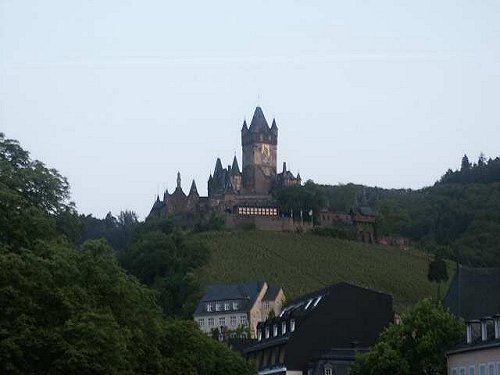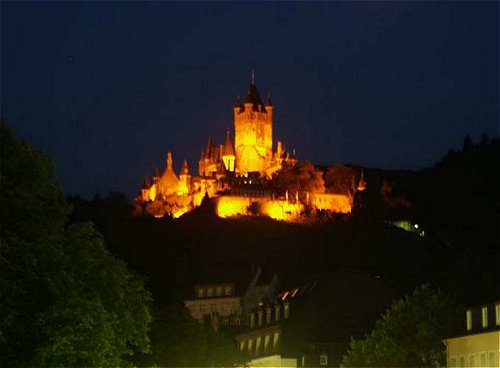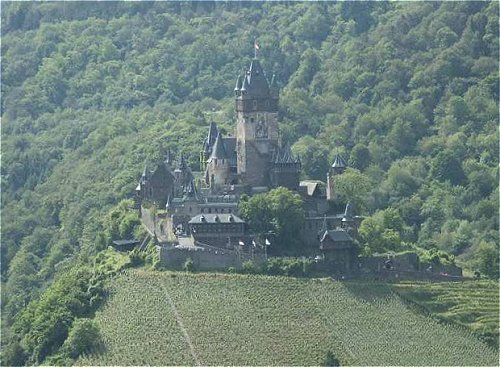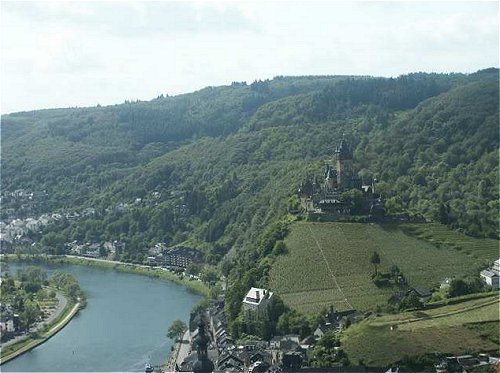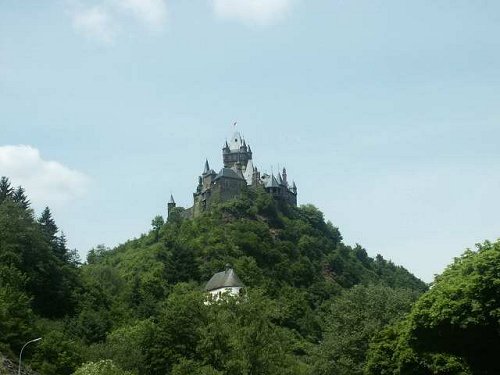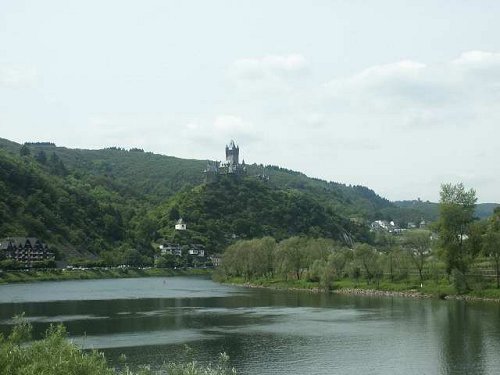For reasons unknown even to me, I neglected to visit this castle when I was stationed in Germany... but then again, I failed to visit the entire Mosel region at that time. The reason for this is simple, I think... the Mosel is one of the best kept secrets of Germany. As one German noted on a website, you don't come to the Mosel to sightsee. You come for a visit.
And if the Mosel is one of the best kept secrets, Cochem is one of the jewels in the crown. It is a gorgeous small town, nestled in the Mosel and Endertbach valleys. It has a host of narrow streets and delightful shops. Moreover, it is not a tourist trap for foreigners, though it does have some tourist trappings. Though crowded at the time, the people I ran into were Germans and Dutch. If I was given a chance to retire here, I would take it in a heartbeat. Nevertheless, even a small town like Cochem has troubles, as attested to by the graffiti on the abuttments of the bridges.
Cochem is one of those castles in which I did not take the tour. But just walking around it, and visiting the town itself, was wonderful. The castle was first mentioned in documents in 1051, when it was given as a gift by the Queen of Poland to her nephew, Henry I the Count of Palantine. The castle and surrounding towns were latter pawned (yes... pawned) by Adolf of Nassau in order to pay for his coronation as the Holy Roman Emperor in 1294. The Electors of the Empire had chosen Adolf because the House of Nassau was a competitor to the House of Hapsburg, which was gaining alarming strength at this time. The pledge was held by the Archbishop of Trier until the 1790s, as no emperor ever pulled together the money, or bothered, to redeem it.
The French ravaged the town and castle in 1689, and the latter was not rebuilt until the 1860s. It was restored on the neogothic style and thus is largely a new structure.
Above, the Mosel valley with Cochem below. Left, the classic closeup view of the Reichsburg, with its well-manicured vineyards along the northern slope. These two photos were taken from the overlook to the north. To get there, you can hike or take the sesselbahn (chairlift).
Below, the Reichsburg in transition, from dusk to night. These taken from the bridge across the river as a cold front was rolling in, and temperatures plunging to the 40s!
